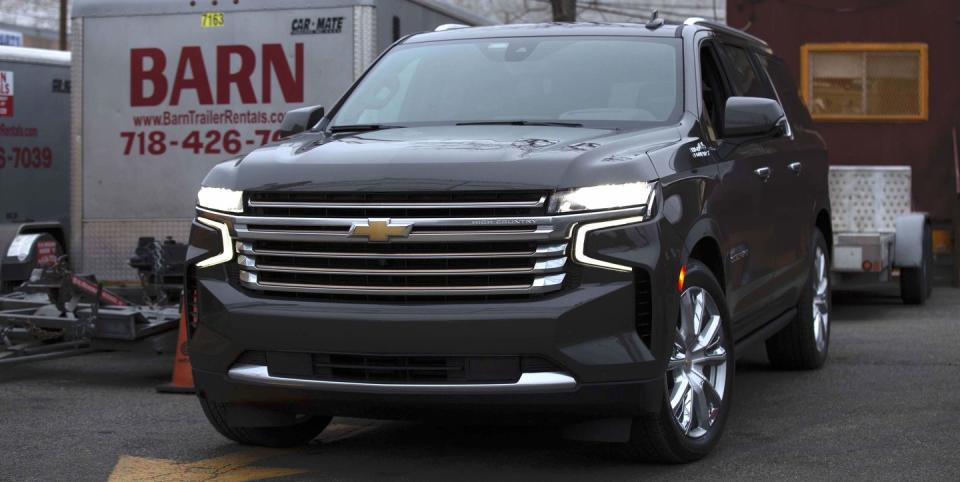You Definitely Want the Diesel in Your New Chevy Suburban

Chevrolet has added a diesel engine option to its revamped full-size Tahoe and Suburban SUVs for 2021. Available on every trim save for the off-road focused Z71, the 3.0-liter Duramax turbo inline six is a $995 option (except in the case of the High Country trim, where it’s actually $1500 cheaper to go diesel) over the base gasoline V-8, a naturally aspirated 5.3-liter. And after spending five days and several thousand miles behind the wheel of a Duramax-powered Suburban, it has become clear that the diesel is a must-have for anyone who plans to use their massive Chevy truck for its intended purpose.
Digital editor Aaron Brown and I needed to be in Missouri in mid-March for the 100 Acre Wood rally, in which we planned to participate using Aaron’s E36 M3 as part of an upcoming story in our magazine. Since we were both in New York City, we needed a tow vehicle that could haul a race car and all of its spares. Having just driven a Tahoe with the base 355-hp 5.3, this was a perfect chance to get our hands on the diesel variant and compare. The differences were shocking.
Don’t get me wrong; I know why they offer a 5.3-liter V-8. It’s for fleet sales, Ubers, and people who can’t fathom paying for anything other than 87-octane gasoline. But in vehicles as big as the Tahoe and Suburban, it’s a bit lethargic. You really have to wind it out to get going, and revving a truck engine never feels satisfying.

The diesel, on the other hand, is perfectly suited to this application. It’s well-tuned for the truck’s weight, working well with the standard 10-speed automatic to ensure the right amount of thrust gets to the wheels. While it’s down on horses versus the V-8, it makes up for it with torque: a mere 383 lb. ft. versus a full 460. It feels like the engine that was meant to be in this truck from the beginning.
And a Duramax under the hood is especially useful if you have a trailer out back. Though Chevy’s official tow capacity ratings for the diesel are only slightly better than the 5.3’s, that low-end torque makes all the difference. Pop it into trailer/haul mode and the truck adjusts throttle sensitivity and gearbox settings, optimizing revs and avoiding any extra strain on the driveline. Even with 5000 extra pounds out back it never felt like the diesel was struggling to pull its weight, whether accelerating onto the highway, scaling steep inclines, or passing lesser traffic. Best of all? This truck returned about 500 miles to a tank.
Weirdly enough, the most surprising part about driving around in a modern diesel-powered Suburban has to be reactions you get. Over a dozen people must’ve stopped us in the paddock or at gas stations to ask if it was really a diesel. They seemed impressed when we told them it was. In their defense, there is something inherently cool and unusual about a seemingly luxurious SUV with a more utilitarian powertrain. I can only imagine how strange it would be to own a diesel-powered Escalade.
And the rest of the Suburban? Aaron and I spent approximately 40 hours behind the wheel during our trip, and I’m happy to report it was an overwhelmingly positive experience. Though it wasn’t perfect.

 Yahoo Autos
Yahoo Autos 